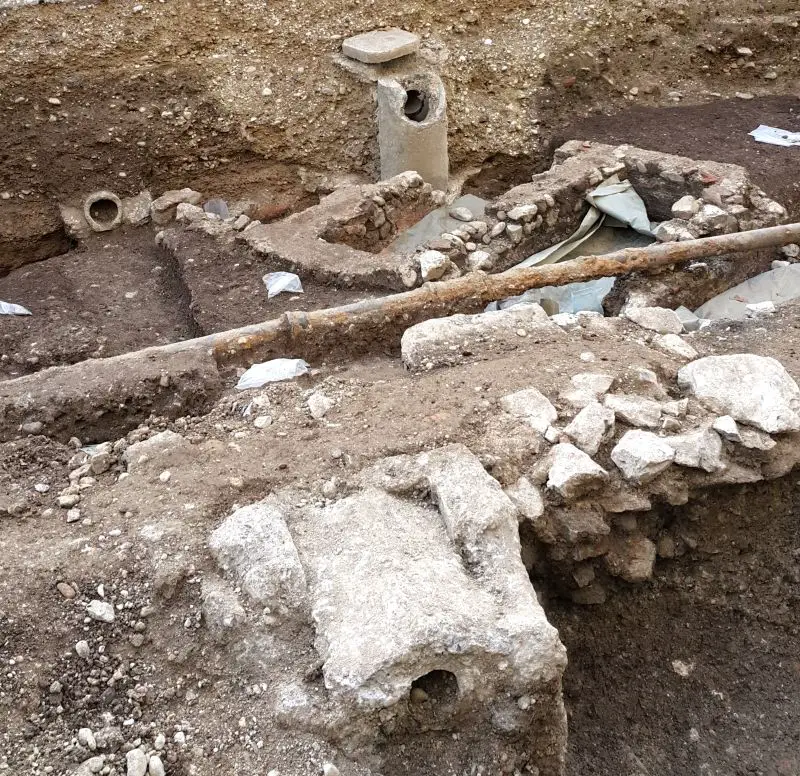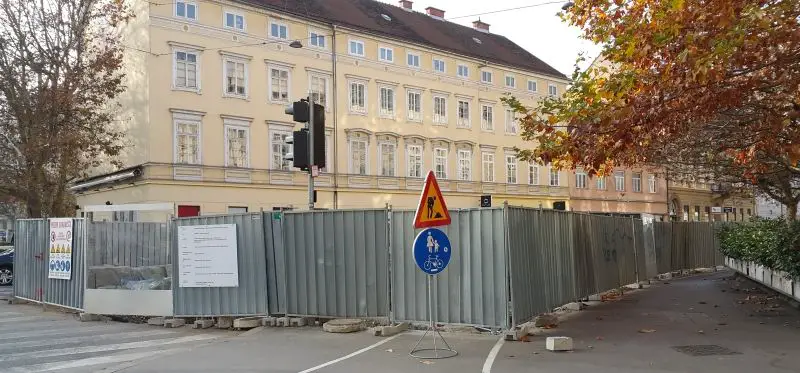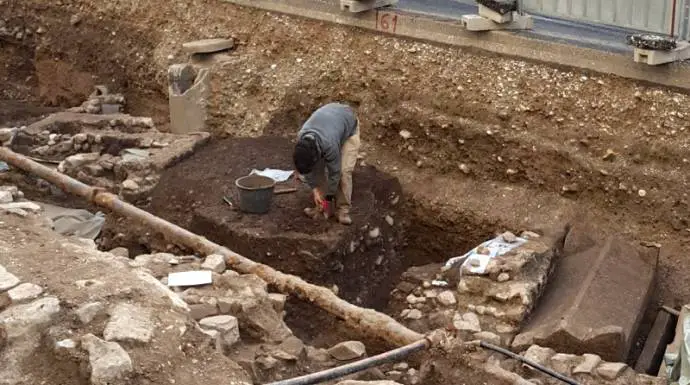In the next two years streets of Ljubljana, Medvode and Vodice will turn into construction sites with 131.5 kilometres of sewage canals planned to be built, 88 of which in the city of Ljubljana in a single canal building project that is the biggest seen since Roman times. Moreover, the Romans once again play their role in the story of the city, as every time a hole is dug in Ljubljana the heavy machinery is soon halted and people with trowels and brushes get in to see what they can find.
Ljubljana is built on the top of the Roman city of Emona (built in 35 BC), which belonged to Italia (city of Rome) and not the province of Illyricum, as speculated until 2001, when a boundary stone dividing the municipalities of Aquileia and Emona was discovered in the bed of the Ljubljanica River at the mouth of the supposed drainage ditch some 13 km southwest from the city. As boundary stones were never placed between cities of different provinces, and Aquileia belonged to Italia (city of Rome), Emona then must have been part of it, too.

More excavations
The Roman sewage system, called cloaca, with its clay floors and brick ceilings, was built so strongly that parts of it, such as that in Gregorčičeva and Vegova Street, were still in use by the early 20th century. A preserved part of Roman cloaca with a stone cover can now be found in the north-west corner of the Secondary School of Mechanical Engineering and Chemistry on Aškerčeva Road.
This new sewage construction project is going to affect around 250 streets in Ljubljana, and while the streets are opened up some 50 km of aqueduct, 30 km of drainage pipes and 40 km of gas and water-heating pipelines are going to be replaced. An interesting part of the project is taking place right now at Gosposvsetska Road, where one of Emona’s cemeteries is located. The people of Emona buried their dead alongside the four roads leading into the city in graveyards located outside the city wall. The cemetery underneath Gosposvetska is located alongside the northern inbound route, today’s Slovenska Road, which led to the city of Poetovio, now known as Ptuj.

Gosposvetska will look like this for a while
Excavations on Gosposvetska can be observed through plastic windows inserted in the fence surrounding the construction site. Many of the stone caskets have by now been moved, presumably to the City Museum. Apart from its underground, Gosposvetska Road will also be reconstructed on its surface. Trees will be planted on both sides of the road and paved in stones, not much different from the reconstructed part of Slovenska Road. Unlike Slovenska, however, two-way traffic will stay on the road, and whether this will cause any confusion with the fact that Slovenska will remain closed to regular traffic remains to be seen. More details on this project can be found, in English, on the architect's website.






